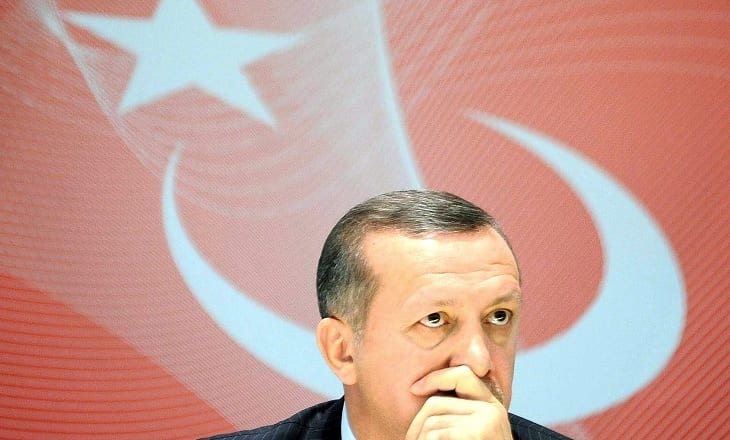This article was written by Ipek Ozkardeskaya, Senior Market Analyst at FCA regulated broker London Capital Group Holdings plc (LON:LCG).

Ipek Ozkardeskaya, LCG
The Turkish lira has depreciated significantly against all of the G10 currencies, except the pound over the last 12 months.
The euro has gained 13% against the Turkish lira since December 11th 2015, with the US dollar surging 18%. The ultimate winners have been the Japanese yen (+22.40%) and the New Zealand Dollar (+25%) over the same period.
The British pound is the only currency that has depreciated against the lira (-2.70%), due to the sharp sell-off following the Brexit referendum.
The picture is equally worrying against emerging market currencies. The lira lost:
- 0.66% of its value against the Mexican peso, which has had a horrific year due to the US elections and Donald Trump’s presidential victory;
- 9.80% against the Chinese Renminbi, although a significant economic slowdown hit the world’s biggest emerging market. This means even the cheapest Chinese imports have become significantly more expensive for Turkish consumers.
- 18.53% against the Korean Won, which has been shaken by a sizable political scandal resulting in President Park Geun-ye’s impeachment;
- 32.42% against the Russian Ruble, despite struggling with cheap oil and commodity prices throughout the year;
- 34.76% against the Brazilian Real, which had a difficult political year marked with its epic President Dilma Rousseff’s impeachment;
- and 35.28% against the South African Rand, which also faced a big corruption scandal involving its President Jacob Zuma.
Over the past twelve months, the Argentine peso (-28.15%) has been the only leading EM currency that has depreciated against the Turkish lira.
As a result, we can comfortably say that the 2016 balance sheet has been quite heavy for Turkey. The situation is alarming.
What caused the lira’s Big Fall?
There is a complex set of economic and political factors explaining the lira’s depreciation across almost all of the leading G10 and EM currencies. Some of them are acceptable; some of them are unfortunate, yet some of them could have been prevented, but were not.
Let us start with the simplest and the most theoretical explanations and further build through what has led to such a big drop.
Current account deficit
The currencies of countries with a persistent current account deficit tend to depreciate over time. This is due to a simple balance of payments equation. If more cash quits the country then it enters, the demand for the domestic currency is lower than the demand for the basket of foreign currencies. Hence, the domestic currency depreciates.
A rapid glance at Turkey’s historical trade data shows that Turkey has often struggled with a sizable current account deficit, as the Turkish economy is highly energy dependent and a net importer of manufactured products. According to OEC, Turkey’s top imports are cars, refined petroleum, petroleum gas, gold and scrap iron. Many electronic items and consumer goods are also imported. The top import origins are China, Germany, Russia, Italy and the United States. In return, Turkey exports soft commodities, clothing, cars, trucks, vehicle parts, consumer electronics, steel, iron and of course tourism.
Although Turkey has well managed to diminish its current account deficit from 9.65% to 4.13% of its GDP since 2011, the rapid depreciation in the Turkish lira against its major trade partners’ currencies could compromise the recent improvement. On a side note, the miscellaneous component that has often explained the improvement in the balance of payments will not be treated in this article.
In addition, the country’s tourism revenues dropped by 32.8% year-on-year in the third quarter of 2016. Political uncertainties and safety concerns following July’s military coup attempt have taken their toll on the Turkish tourism sector, combined with the already existing rise of religious extremism, frequent terrorist attacks and several other safety issues.
Inflation
According to the country’s statistics, inflation has remained surprisingly under control, despite lira’s sharp depreciation and a noticeable rise in imported product and food prices. The government’s suggestion to manipulate the computation of the consumer price inflation by reducing the percentage of food in the basket of the consumer will not be treated in this article.
Even with that, the country printed 7% year-on-year inflation in November, meaning that ceteris paribus, the interest rates in Turkish lira should at least cover for the erosion due to inflation.
Questionable central bank independence
The current account deficit, inflation and geopolitical risks have unfortunately weighed on the lira. It is a sure thing that Turkey’s Central Bank operates in a very difficult environment and reversing the lira depreciation was for sure impossible. Yet the speed of depreciation could have been better managed through an appropriate interest rate policy.
As mentioned above, the interest rates should cover for the price inflation, but also, and preferably for high political and geopolitical risks. In this respect, one would expect the lira rates being raised as a compensation for risks that investors take by holding the lira and lira denominated assets. Even more, as Turkey has lost its investment grade rating both by Standard & Poor and Moody’s following July’s coup attempt.
Surprisingly though, Turkey loosened its overnight lending rate from 10.75% to 8.25% through 2016. The loosening started as President Recep Tayyip Erdogan assigned Murat Cetinkaya as the new Governor of the Central Bank of Turkey. Regardless of the economic, political and geopolitical situation, Turkey trimmed rates at an inappropriate and harmful pace.
The overwhelming depreciation in the lira has finally brought Mr Cetinkaya to raise the lending rate by almost a laughable 25 basis points in November.
The lira got hammered again.
We stay away from the lira
The Turkish lira remains on slippery ground following the weekend’s terrorist attacks at the central district of Besiktas in Istanbul. Combined with high political and geopolitical risks, questionable central bank independence and President Recep Tayyip Erdogan’s aggressive push for lower interest rates, rising social unrest and overheating discussions regarding the looming constitutional referendum that would give President Erdogan the supreme power, tensions on the lira and lira denominated assets are certainly not ready to ease.
In addition, higher oil and commodity prices are expected to reinforce selling pressure on the lira.
Although the substantial fall in the lira could encourage technical traders to build fresh long positions in the short-term, we reiterate our mid-term bearish bias in the lira against the leading G10 and EM currencies and warn that even short-term, long exposure to the Turkish lira is very risky.
